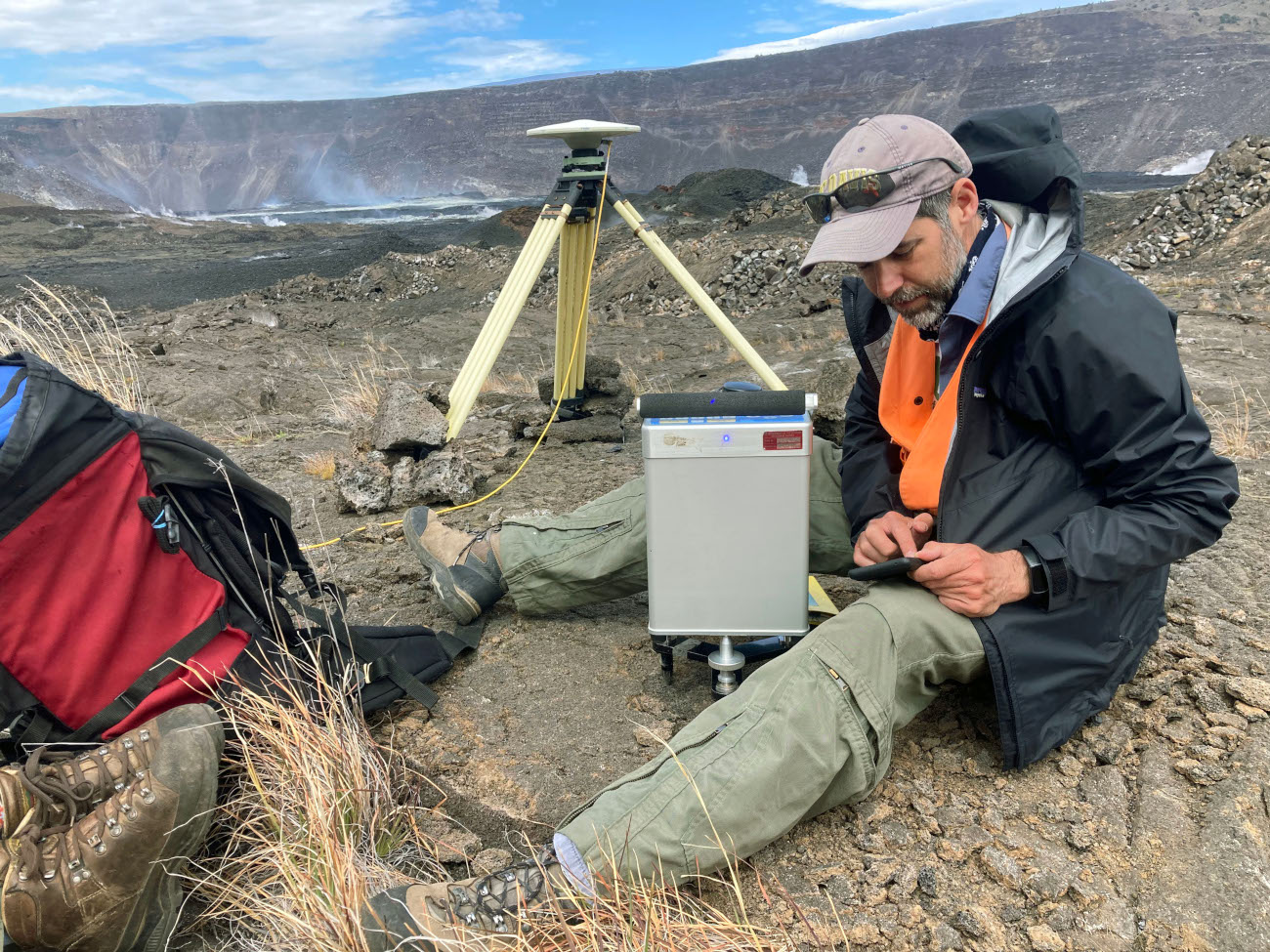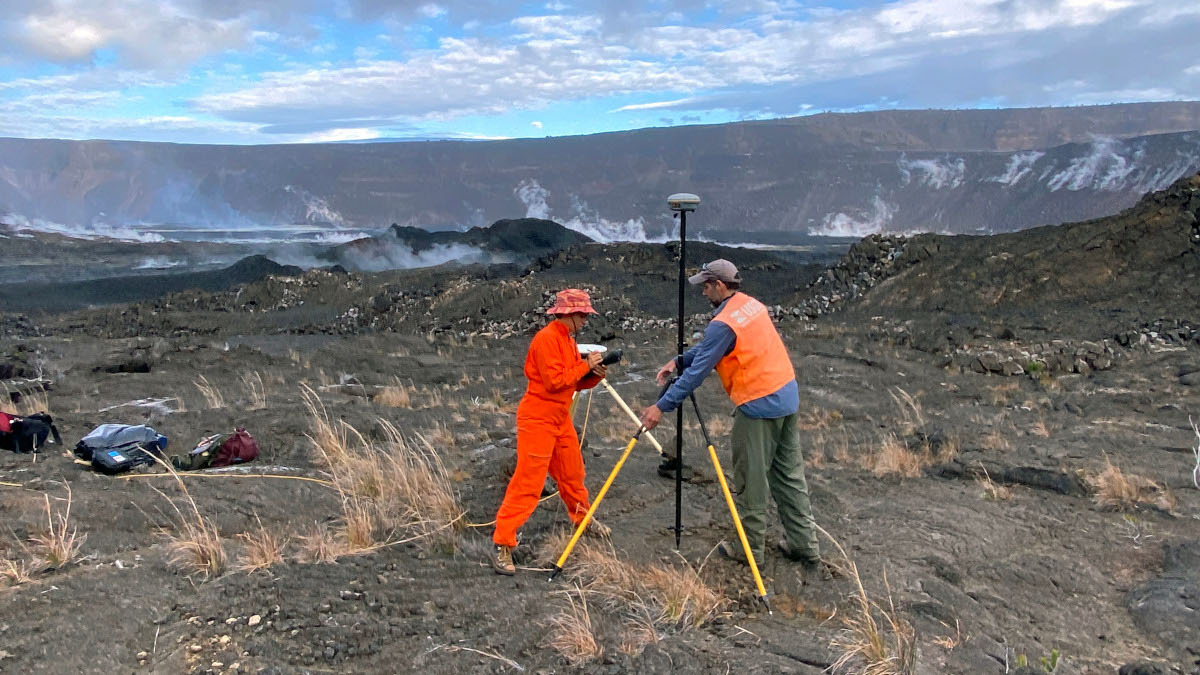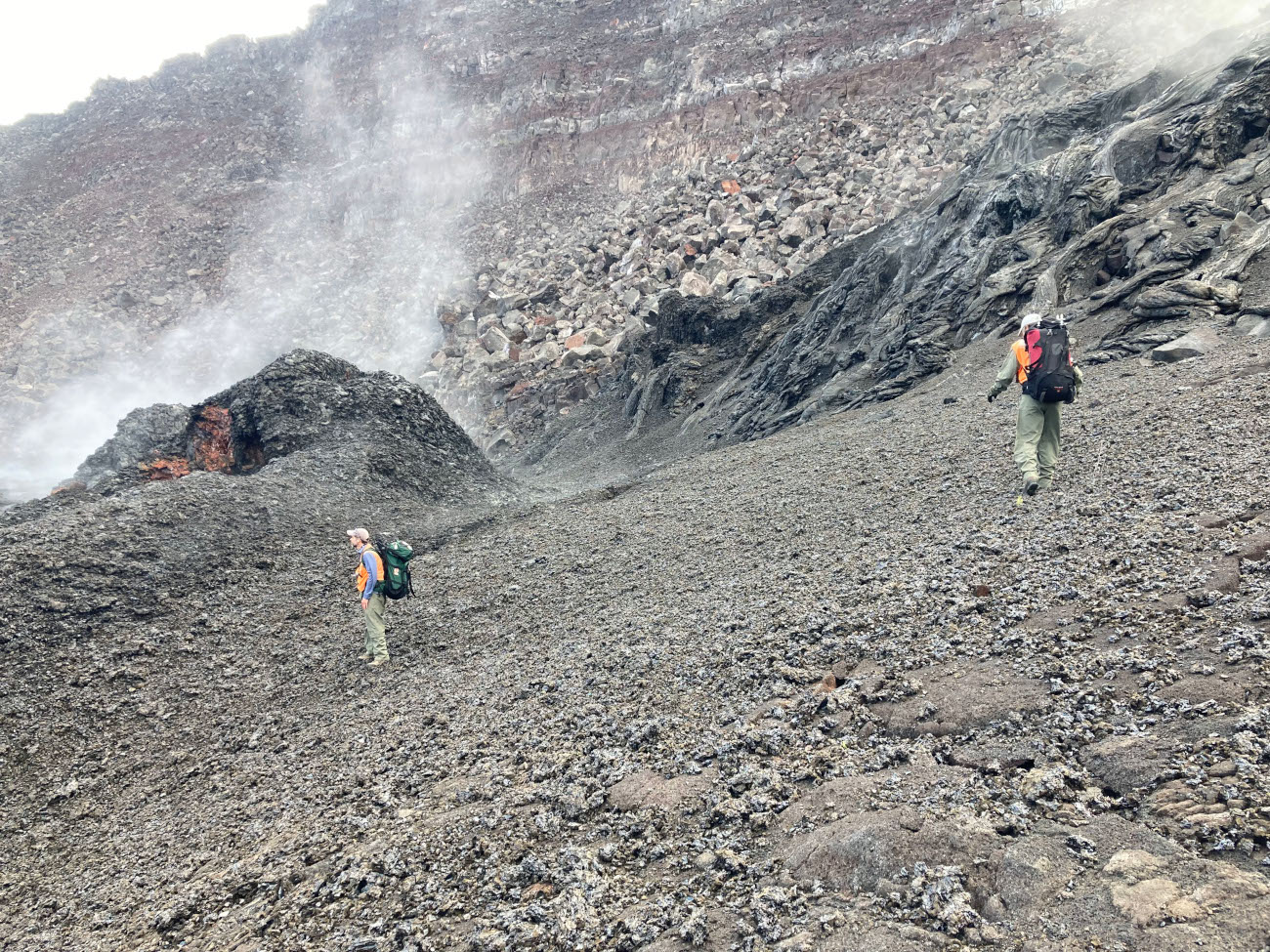
The annual gravity survey being conducted at Kaluapele, the summit caldera of Kīlauea volcano, on March 25, 2024. (USGS photo by A. Ellis)
(BIVN) – The annual Kīlauea gravity survey was conducted by the USGS Hawaiian Volcano Observatory this weekend.
Its a relatively quiet time at the summit. Kīlauea is not erupting and the USGS Alert Level remains at ADVISORY. Low-level seismicity continues beneath the summit and Southwest Rift Zone.
On March 25, HVO staff and collaborators hiked to Kaluapele at Kīlauea’s summit caldera to do their work. The scientists used instruments such as the shoebox-sized gravimeter, capable of measuring “a change in the force of gravity to one-in-one billionth of the force you feel every day.”
“Measurements of gravity over time can show how mass is distributed beneath a volcano,” the HVO wrote, as several photos of the survey effort were posted to the USGS website. “At Kīlauea, these routine microgravity surveys help the observatory to monitor volcanic activity and to determine changes in gravity,” the scientists wrote.
The photos show scientists traversing the floor of the volcano caldera in order to take the gravity measurements, as surrounding lava flows from last year’s summit eruptions can be seen steaming in the background.
The USGS HVO wrote:
Gravity measurements detect subsurface mass change — for example, magma accumulation or removal beneath the surface. If magma is filling or draining void spaces, it may not be signaled by ground deformation or earthquake activity, but it will be signaled by gravity because of the mass change. In this way, gravity is a way of detecting changes in the magma reservoir that might otherwise be hidden.



by Big Island Video News10:22 pm
on at
STORY SUMMARY
HAWAIʻI VOLCANOES NATIONAL PARK - The routine microgravity surveys help the observatory to monitor volcanic activity and to determine changes in gravity, the USGS says.